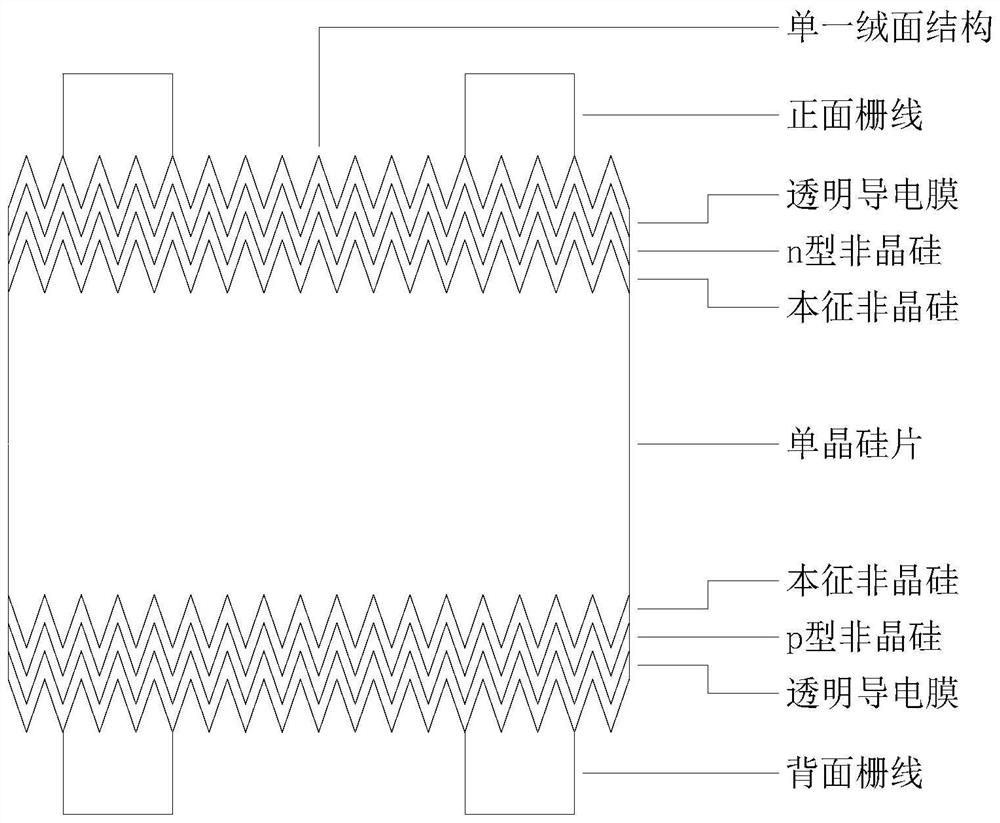Method for manufacturing selective texturing heterojunction solar cell
A technology of solar cells and manufacturing methods, applied in the direction of final product manufacturing, chemical instruments and methods, sustainable manufacturing/processing, etc., can solve problems such as high defect state density, open circuit voltage drop, and increase the recombination probability of photogenerated carriers. Achieve the effects of cost reduction, enhanced anti-reflection effect, and reduced production process
- Summary
- Abstract
- Description
- Claims
- Application Information
AI Technical Summary
Problems solved by technology
Method used
Image
Examples
Embodiment Construction
[0024] The present invention will be further explained below in conjunction with the accompanying drawings and specific embodiments.
[0025] A method for selectively making textured heterojunction solar cells, combining the attached Figure 8 shown, including the following steps:
[0026] Step 1: Clean the monocrystalline silicon wafer with a cleaning solution at 60-85° C. for 60-300 seconds. The cleaning solution is a mixture of potassium hydroxide, hydrogen peroxide and water at a volume ratio of 1:1:6.
[0027] Step 2: Alkali etching the monocrystalline silicon wafer treated in Step 1 with 60-85° C., 5-25 wt % potassium hydroxide solution for 60-300 seconds, and the etching depth is greater than 5 μm to remove cutting damage.
[0028] Step 3: The single crystal silicon wafer treated in Step 2 is used to make a retardation layer on the required selective texturing area on the surface of the retardation material.
[0029] The selection principle of delaying material: it is...
PUM
| Property | Measurement | Unit |
|---|---|---|
| depth | aaaaa | aaaaa |
Abstract
Description
Claims
Application Information
 Login to View More
Login to View More - R&D
- Intellectual Property
- Life Sciences
- Materials
- Tech Scout
- Unparalleled Data Quality
- Higher Quality Content
- 60% Fewer Hallucinations
Browse by: Latest US Patents, China's latest patents, Technical Efficacy Thesaurus, Application Domain, Technology Topic, Popular Technical Reports.
© 2025 PatSnap. All rights reserved.Legal|Privacy policy|Modern Slavery Act Transparency Statement|Sitemap|About US| Contact US: help@patsnap.com



